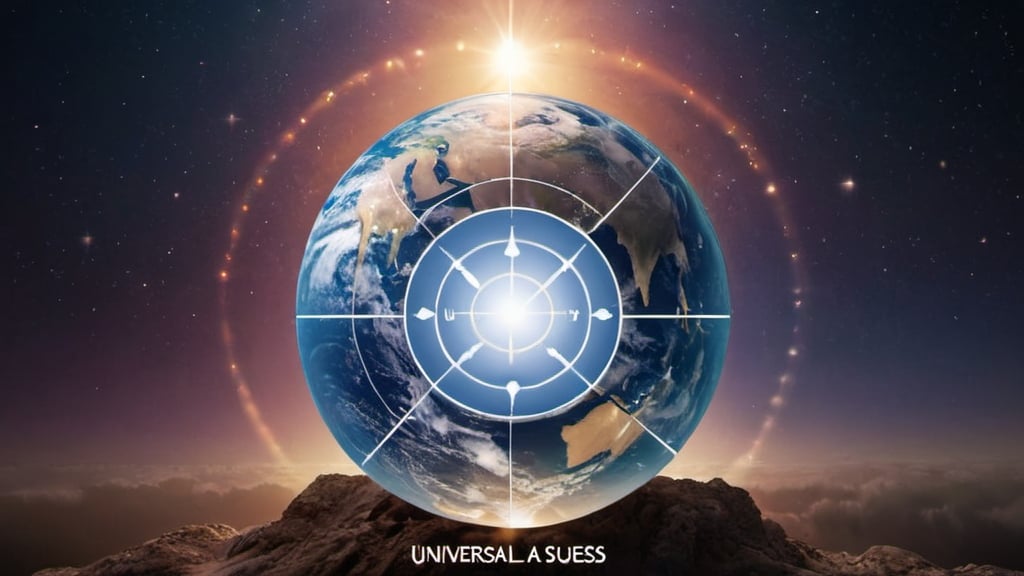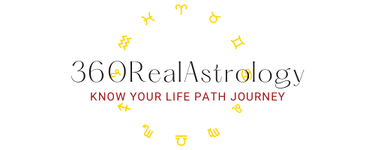Unlocking Success: A Comprehensive Guide to the 12 Universal Laws

1. Introduction
The Law of Inspired Action asks us to make any necessary changes to keep ourselves in alignment with what we are trying to accomplish. Inspired action around the right opportunities will produce great results.
This Law is the main Law and is the essence of the 12 Universal Laws. The Law of Attraction uses the power of the mind to translate whatever is in our thoughts and materialize them into reality. Whether you want to believe, the law of attraction is working all the time.
The Law of Correspondence teaches us that what is within our world is a direct reflection in relation to our beliefs. What one puts out into the world will come back and present itself, the Law of Attraction.
The second of the 12 Universal Laws is the Law of Vibration. This Universal Law tells us that everything is in motion and that nothing rests. We must make sure that our vibration is in alignment with what we want to attract into our lives.
The Law of Divine Oneness is the first of the 12 Universal Laws, and it helps us to understand that everything in this world is connected to everything else. It is this Law that helps us to understand that our quality of thoughts, emotions, words, and actions are all forms of energy and therefore will return to us in like energy.
1.1. Overview of the 12 Universal Laws
The laws make up the words on the two eternal tablets – The Ten Commandments. The Talmudic scholars claim that God created a copy of these twelve Universal Laws for each of the seventy nations of the world so that they could have a blueprint for peace. Unfortunately, many individuals and nations have not heeded this advice. However, one should not be discouraged from realizing the potential to harness the incredible power of these Laws. These are natural laws that are absolute. They have always existed and will always exist. They reside on a much higher plane than the laws of science and are the blueprint of God’s plan for the world. By knowing these laws and following them, one is given the opportunity to work in harmony with the power of the universe. This is the path to true freedom and success in any pursuit of life.
1.2. Importance of Understanding and Applying the Laws
The error of living in the past or future and failing to live in the present moment is a chronic human affliction. Most of us think we are thoughtful, but we are really quite the opposite. We mentally dwell upon the past and worry about the future. It is thoughts, not facts, which are troubling us. However, it is clear that the only place we can act and create change is the present; everything else is an illusion. By understanding the Law of Thinking, recently called the Law of Attraction, we can train and change our thought patterns.
This is performed firstly by becoming more conscious of thought and secondly by understanding that thought has specific energy and form. For example, change the term “I can’t” to “I’ll try”. It is said that thought equals form, energy, and power. Aware or unaware, most people’s dominant thought is for more material wealth. The error is in thinking that material wealth will bring security and comfort. This is the ultimate goal and is covered by the Law of Vibration and Attraction. The understanding of this should lead to the realization that wealth is a state of mind and it does not necessarily require the accumulation of material.
How can you work alone on the Law of Oneness? By changing your belief structure and thoughts. Have you ever noticed that negative thoughts and actions are essentially individualistic? When you express a view on other people, it is usually because they are not like you or they have interfered with something you were doing. This is an expression of separateness. Try to change negative thoughts to positive thoughts for others. This will create a better attitude and a better environment for those people and yourself. Allowing for the bettering of the collective consciousness is not working on only the Law of Oneness; you will see parallels between each one.
Law of Oneness, the first of the 12 Universal Laws, helps us to understand that everything in this world is connected to everything else. That has some fortunate implications. If you understand that you are a spiritual being and everyone else is also spiritual, you can build a team or a community which works on this principle for the betterment of all.
2. Section 1: The Foundation of Success
An essential part of achieving success is believing that you already have it. The law of attraction can enable you to see yourself in a successful position, in turn allowing you to believe it is possible. This in turn will lead you to take the necessary risks, make sacrifices, and put in determined effort. Using the law of attraction to envision your success can create a stirring desire and ignite the passion and belief that achieving this is a tangible possibility. With the correct mindset, this will become a self-fulfilling prophecy, with the envisioned success coming to fruition. This law mandates that positivity is the key tool in achieving success, and anything is possible when you believe.
The Law of Attraction is a universal law that dictates the pull of energies. It is by focusing on the positive or negative that you will bring positive or negative energy into your life. For a positive thinker who is eager to establish success in all facets of life, this is a powerful tool. It is largely said that you can get what you want or you can get what you don’t want, and both will happen as a result of this law.
This section lays emphasis on the fundamental principles of the universe and the role they play in determining your level of success. By gaining an understanding of the laws in this section and applying them to your daily life, you can truly gain mastery of the path to success.
2.1. Law of Attraction: Manifesting Your Desires
As is so for the law of attraction, if it holds true for you are an energy ‘vibrating’ at a certain frequency, transmitting your own signal out to the universe. Many of us will have heard the expression “positive vibes”, but often what it actually means is that somebody is emitting a positive energy. This in itself is an important point to consider, for we know that on days when our mood is low, or we are feeling unwell, our energy is of a much lower frequency and therefore our signal is weak.
Now the key to this is that the universe does not recognize the signal that we are emitting by our present state of being, but by the frequency of which that signal is on. This is where we often fall short in the application of this law. An understanding of our creation and the laws that govern it will enable much better control over the vehicle, the mind, and the body, that it is in fact simply possible to change the frequency of our energy at any given time, by changing our thoughts and emotions.
If not the most popular of the twelve universal laws, the Law of Attraction is surely one that we are becoming more conscious of in current times as a result of the ‘new age’ spiritual explosion. Up until now, we have been familiar with the ‘like attract like’ philosophy to an extent. Although we do not realize the power and effect of this law, we are certainly not oblivious to it. Often thoughts of worry and despair will attract more of the same, whilst those thoughts of a positive nature seem to fly out of the mind at lightning speed – with little or no return! There has never been a more pertinent time in the history of the human race to fully comprehend the power of this law, for it is a powerful tool in the ongoing creation of the reality of our world.
2.2. Law of Vibration: Aligning with Positive Energy
In knowing that we always have to be aware of the energy we are putting out, we can feel secure in the knowledge that we can intuitively decide if something is on our wavelength or not. Learning to trust intuitive feelings about the vibration of the energy in certain people, places, and things will help guide one into making the right decisions in alignment with higher energy levels. Being aware of the effects of our actions, we will choose to act only in a manner which will promote positive effects. By letting go of lower energy habits and consciously choosing higher energy alternatives, one can, in time, begin to live in a state congruent with the law of vibration.
The law of vibration states that everything in the universe moves and vibrates, and that it does so at different frequencies. Science has proven that everything in the universe is energy in motion, and that at its core exists a vibrational frequency. The vibration of the universe is in constant progression of giving and receiving energy. It is our job to focus on ensuring the energy we are giving out to the universe is at a high frequency. Whatever we put out into the universe will come back to us in an equal measure. This is the law of cause and effect. Cause and effect teaches us that our actions have corresponding effects in the universe and in our lives. Whether it is an effect that is on a different scale or level, the effects of our actions will be there.
2.3. Law of Cause and Effect: Understanding the Power of Actions
In the example of punishment, let’s say a child has done something wrong unbeknownst to the parent and the parent punishes the child without understanding why he did it. The child will feel resentment from the punishment and not have learned anything. It is the same with our own actions. If you do something wrong but do not understand why the action was wrong, getting punishment in some form will make you only associate the action with the consequence but not the cause – further leading to possible repetition of the action. What the child and ourselves need to understand are the mistakes that were made and learn how to avoid them in the future. This is the purpose of ‘negative’ consequence, and the power of utilizing it can create change.
The traditional way that people perceive this law is in judgment. You do something wrong (by your own or someone else’s standards) and you get a so-called ‘payback’ which can come in the form of feeling guilt, physical punishment, loss of something or someone, etc. This way of thinking is ingrained in punishment from childhood with parental figures or authorities punishing ‘bad’ behavior. What this way of thinking often misses, however, is the purpose and result of punishment, and it is with the understanding of this which holds the key to change and improving our lives.
This law is very much related to the Law of Attraction, as it is the cause you put behind an action that is the real force in what the action creates. The Law of Cause and Effect is a simple one to understand, in that all actions have a reaction and a consequence. Whether good or bad, it’s the accountability of your actions that create your character and thereby destiny. Understanding these laws puts the power of change and creation into our hands.
3. Section 2: Mastering Personal Growth
Law of Belief: Shifting Limiting Mindsets. Throughout our lives, we adopt certain beliefs about ourselves and the world around us. Whether they stem from upbringing, culture, or experiences, these beliefs shape our lives, acting as a self-fulfilling prophecy. Changing negative beliefs to positive ones can be a difficult task but is crucial if we desire to lead a fulfilling life. Limiting beliefs only serve to make us feel bad about ourselves and prevent us from creating the life we really want. By becoming aware of the beliefs that are holding us back and learning to challenge them, we can begin to take the first steps in changing them.
Affirmations are one of the best ways to introduce a new belief into your mind. They are positive, action-based statements that describe how we want to be. Writing out an affirmation and repeating it several times a day helps to reprogram the mind and gives it a clear blueprint to follow. When choosing to adopt a new belief, it is essential to put it into practice, and it is likely that a situation will arise which challenges the new belief. In such a case, it is important not to revert to the old belief but to stay congruent with the new one. Over time, the more a positive belief is reinforced, the more it becomes an automatic attitude.
3.1. Law of Belief: Shifting Limiting Mindsets
The second stage is to identify the effect that having that belief has on our feelings, thoughts, and actions. The third stage is to trace back where and when we have picked up that belief. The fourth is to ask ourselves how we could have a new empowering belief, and finally, to install the new belief. This involves repetition of the new belief and taking actions that are in line with it. This is the kind of determination that can move us into a complete change of character.
Changing our limiting beliefs to empowering ones involves many stages. First is identifying our limiting belief. This is the belief that we hold around something that limits the possibility of success. For example, a person who believes “I’m not smart” will affect their ability to be successful in education and in life.
We often have a perception of reality that holds us back in achieving our goals or potential. This is due to our limiting beliefs that we have accumulated throughout our lifetime. In order to adapt this law into our life, we need to change our perspective first.
3.2. Law of Forgiveness: Releasing Past Baggage
With the intention of raising spirit, the power of the universal law can help. With the law of forgiveness, we can change our past and future by changing our interpretations of our past. We are all doing the best we can, with the understanding, awareness, and knowledge we have at the time. When a person is unhappy with his past, he is now given the opportunity to change the past and facilitate a future more suitable. By changing an individual’s past interpretation, we can then change its effects and in changing the effects, we change the cause. This is the metaphysical process of mind over matter.
The Law of Forgiveness is one of the most powerful of the universal laws. Forgiveness is the means by which we can all free ourselves from a past that will not and should not let go. We often bring the problems from the past into the present, and it will affect our future. The law of forgiveness is the process of “letting go”. We see our past as a burden. If we continue to carry this burden, it will manifest in our lives with feelings of guilt, sorrow, anger, and nonacceptance of others and self. The effects are physical and emotional toxicities, which often lead to disease. With disease, one is forced to concentrate on the body, giving a lack of attention to the spirit.
3.3. Law of Gratitude: Cultivating a Positive Mindset
The law of gratitude is about being thankful and positive, and it is about acceptance. When we apply this practice to our lives, it not only shifts our own personal vibrations to a higher frequency, but in doing so, it raises the collective consciousness of all beings. Gratitude has been proven to have a positive effect on our mental and physical health. People who practice gratitude a few minutes each day have been shown to be more optimistic about their lives, they exercise more frequently, and visit the doctor significantly less often than those who don’t practice gratitude.
These are the scientific reasons for us to practice gratitude; it hinges on the presumption that it is human instinct to look for what can be improved in our lives, and we become distressed as a result of always feeling like we need to do or have more. An attitude of gratitude is the most efficient way to bring the realization of improvement and prosperity into physical form. A switch of mindset from a negative focus to a positive focus automatically leads to a healthier, happier life. Life will not bring joy, and joyful people will not attract a joyous life. Any individual, at any time, has the power to change themselves and thus change the world. This cannot be more effectively done than the adoption of an attitude of gratitude.
3.4. Law of Intention: Setting Clear Goals
Setting goals is a crucial step in gaining success and positive results. The realization of our desires must start with forming an intention. Not just a passing thought or a whimsical want, but a quality decision or intention to change something. A wish is weak in comparison to a clear intention. Our energy is an important source in the realization of our desires; the personal energy that we call emotion is a force that is set in motion when we intend.
Our level of intention will determine the potency in manifesting our desires. A strong emotional intention reaches the universe, impacting on the quantum field, and eventuates in the materialization of our desires. This can be demonstrated by considering the thoughts that we think. If we think negative thoughts, we generally begin to feel emotionally low, and it is not long before we find ourselves surrounded by negative circumstances, and vice versa.
4. Section 3: Creating Harmonious Relationships
The first law, the law of connection, is about connecting with others at an optimal level. Leon describes the connection between people as a common thing; however, the depth and quality of connection varies greatly. There are times when we meet people for the first time and there is a sense of familiarity, and it feels as if we have known them before. This is likely to be a past life connection with that person. At other times, there may be a connection based on common interests, ethics, morals, or other commonalities.
These connections are based on life experiences. Past life connections are the deepest and most meaningful connections to be made with others. Leon recommends deep meditation to realize and bring forth the nature of past life connections and resolve any karmic debts with others in order to maximize personal and spiritual growth. This can facilitate one’s understanding of the nature of past and present relationships with others and the reasons for why they are as such.
The law of creating harmonious relationships is one that is essential for living a successful life. In this section, Sandra Leon explains the four universal laws that are based on creating and sustaining quality relationships with others. She explains the fundamental keys that are needed to connect, empathize, understand, and be true to yourself in order to facilitate quality relationships with others.
4.1. Law of Connection: Building Meaningful Connections
In building and maintaining connections with others, it is important to decipher the needs of the people you are involved with. Like with the higher laws, to give another that which they truly require to fill their needs is the most effective way to evoke lasting change. Take time to view things through their eyes and with their life experiences in mind. Understand their ways of communicating and the methods by which they feel loved and valued.
Understanding people’s love languages is an incredibly effective way of showing them that you care. For example, helping a friend with a task to free up some of their time is an effective way of showing them you care if their primary love language is Acts of Service. By showing others love in ways that are most meaningful to them, you suggest that you adapt your communications and teaching in ways that are most effective for the client to bring them closer to their goals.
When considering the Law of Connection and relationships, understand that the beliefs and values you hold should not only resonate within your heart but also echo through the actions of those you choose to associate with. If the bonds you have with others serve only in emptying your energy and lifting another, or vice-versa, it is a relationship based on fear or the victim/victimizer mentality and is not conducive to health and happiness. It is important to aim for relationships where support is mutual and where both parties lift and are lifted.
The Law of Connection is an essential factor in developing and maintaining effective and fulfilling relationships. From the viewpoint of the 12 Universal Laws, because everything is connected, when you embrace this law, you begin to understand that the state of your relationships with others is simply a mirror of your relationship with yourself and with your higher power. At the heart of the Law of Connection is our universal yearning for a sense of belonging; to feel loved, accepted, understood, and a valued member of a community. It is through this sense of connection that we find our highest joy. Often, however, in today’s fast-paced society, many of us struggle to find the time to foster strong, healthy connections with others.
4.2. Law of Compassion: Practicing Empathy and Understanding
According to the Law of Compassion, feelings and thoughts have energies, and these energies will be transmitted to others. People with a negative mood or anger spread that energy to others, who will also receive similar energy. If the mood is already good, they would not feel good receiving that energy. Showing and understanding empathy and compassionate behaviors would be useful in helping the person to get better by transferring positive energies to him. This could be explained in the basic principle of negative and positive magnets, and it is well known that negative and positive that are the same would repel. When people are receiving positive energy, they can work better, and that positive energy will be transmitted to others, helping to create more harmonious relationships between those people.
Empathy has recently become of great interest to the field of behavioral economics. In a short time, it has provided crucial insights into decision making and helping make better predictions of other people’s behavior. By understanding the Law of Compassion, it is quite related to empathy, where it provides insight into decision making and making better predictions of other people’s behavior. This is because by showing people we have empathy for their problems, we are more likely to understand their feelings and perspective, and it can guide our actions in helping the person with our compassion.
Empathy is the art of stepping imaginatively into the shoes of another person, understanding their feelings and perspectives, and using that understanding to guide your actions. Unlike sympathy, compassion takes effort, often hard work and a willingness to go out of your way to help others. This says that empathy and compassion are virtues and not everyone has those. Fortunately, these are traits that can be developed to help any persons or individuals in a broad range of situations, from a troubled child to international diplomacy.
4.3. Law of Reciprocity: Giving and Receiving in Balance
In order to give and receive, we must learn to put the ego aside. Often, people give with underlying intentions or expectations, which will ultimately hinder the value of that giving. Actions that are performed with good intent create positive energy and will always bring value to the relationship, whether you see the consequence immediately or not. When you create value with your giving, it is most likely that the person on the receiving end will reciprocate. When you are in a situation of debt, whether you are the giver or the receiver, it is likely to cause stress and tension within the relationship.
Many of us struggle to ask for what we need, and even more have difficulty accepting help from others. According to the law of reciprocity, not giving can make others on the receiving end feel inadequate, and in turn, may make that person reluctant to ask you for help in the future. They may even avoid you altogether. When you refuse to accept the help of others, you deny them the opportunity to give and the feel-good feeling of helping others. Remember that accepting help is never a sign of weakness, and in the future, you will have the opportunity to reciprocate.
Reciprocity is the key to creating and maintaining successful relationships. There are two types of reciprocity: direct and generalized. Direct reciprocity is where we help those who have helped us in the past. Generalized reciprocity is where we give to others and it comes back to us somewhere down the line, although not always from the same person we gave to. Both forms are important, and instituting them into your life will create healthful, balanced relationships.
4.4. Law of Authenticity: Being True to Yourself
Being true to our true self also honours the Creator, as we appreciate the unique and individual nature in which we were created.
Authenticity, the fourth Universal Law, applies to when an individual honours and is true to their true self, rather than being what they think will gain approval from others. When one is content with who they are and act in a way that is true to themselves, it is far easier to create abundance and positivity in one’s life. Energy will be wasted in maintaining a façade to seek approval from others. Acting in alignment with our true self, however, will lead to opportunities and relationships which are in alignment with our true self and thus karmically rewarding.
In today’s society, the media and our external environment have created many stereotypes and ‘masks’ on how we should act and who we should be. Without clear intention and awareness, it’s very easy for an individual to adopt the traits of others without consciously realizing one has done so. This stems from a desire to be accepted, loved, and validated from others, often found from being a certain way or acting in a way that isn’t in alignment with our highest and true self.
References:
Bell, R. “Being Your Best Self: Authenticity, Morality, and Gender Norms.” Hypatia, 2024. cambridge.org
Steinvorth, U. “A Secular Absolute: How Modern Philosophy Discovered Authenticity.” 2020. [HTML]
Haimson, Oliver L., et al. “The online authenticity paradox: What being” authentic” on social media means, and barriers to achieving it.” Proceedings of the ACM on Human-Computer Interaction 5.CSCW2 (2021): 1-18. umich.edu
Sohmer, O. R. “The experience of the authentic self: A cooperative inquiry.” Journal of Humanistic Psychology, 2020. academia.edu
Gardner, W. L., Karam, E. P., Alvesson, M., and Einola, K. “Authentic leadership theory: The case for and against.” The Leadership Quarterly, 2021. [HTML]
Chen, X., Lee, T. J., and Hyun, S. S. “How does a global coffeehouse chain operate strategically in a traditional tea-drinking country? The influence of brand authenticity and self-enhancement.” Journal of Hospitality and Tourism Management, 2022. [HTML]
Yates, M. “MOTIVES MATTER: THE DEVELOPMENT AND CONSEQUENCES OF CORPORATE SOCIAL RESPONSIBILITY AUTHENTICITY..” Global Journal of Management & Marketing (GJMM), 2020. igbr.org
Davies, Adam WJ. “” Authentically” effeminate? Bialystok’s theorization of authenticity, gay male femmephobia, and personal identity.” Canadian Journal of Family and Youth/Le Journal Canadien de Famille et de la Jeunesse 12.1 (2020): 104-123. ualberta.ca
Kang, J. and Ro, H. “The Role of Brand Authenticity and Existential Authenticity in Building Brand Loyalty Toward LGBT-Friendly Hotels.” Journal of Hospitality & Tourism Research, 2024. [HTML]
Gauthier, F. “Authenticity, Consumer Culture and Charismatic Authority1.” Studies in Religion/Sciences religieuses, 2021. sagepub.com








Connect me